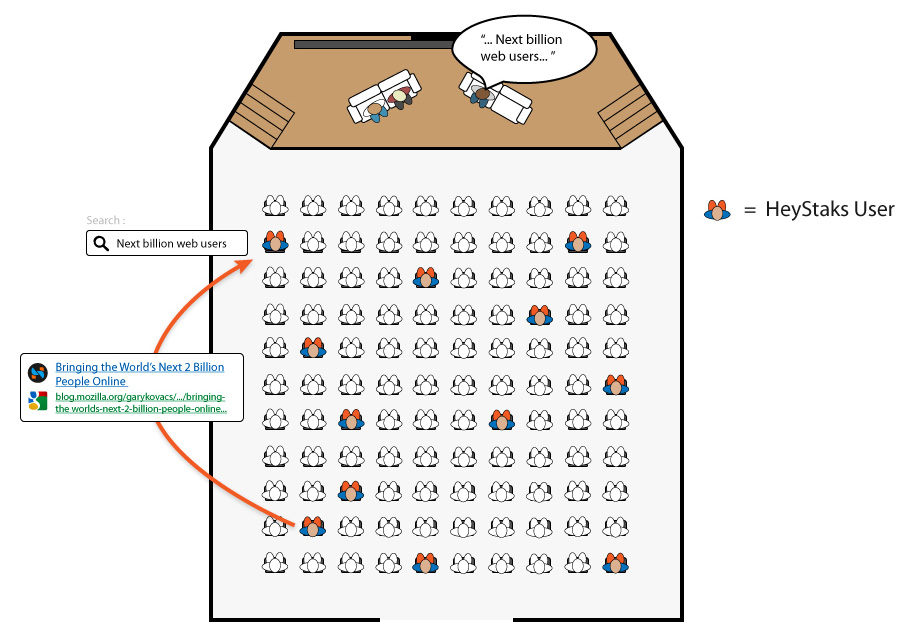Search Engines and Search Behaviour are Changing. What was once the focus of static individual search is now becoming dynamic social search.

Search Engines and Search Behaviour are Changing. What was once the focus of static individual search is now becoming dynamic social search.

For a number of years now, a growing trend in online information retrieval has been “social Web search” (or simply “social search”). It’s a term that continues to be tweaked and defined, and there are some quite different interpretations of what social search actually means. Generally speaking folks interpret social search to mean a form of Web search informed by the searcher’s social graph. The way in which the social graph informs search tends to be searching social feeds from the likes of Facebook, Google Plus and – once upon a time – Twitter. Posts or status updates containing links that match the user’s query can be integrated with regular search results. In this post we explore some of the ramifications of this approach to social search and suggest a different way of looking at things.
Certainly the world of the Web has changed dramatically since 2000, and search engine technology has evolved through a variety of phases. For example, in the pre-Google dawn (Search 1.0), search engines were guided primarily by the words in a page, their location and how they matched the query terms. Google’s great innovation was to demonstrate how search quality could be greatly enhanced by harnessing a new relevance signal: the links between pages. Google’s link analysis technology (PageRank) interpreted links to a page as votes and PageRank was a clever way of counting such votes to effectively compute an authority score for each page, which could then be used during result ranking.As an aside, back in the late 1990’s one of Google’s fellow innovators was a company called Direct Hit, which also argued for the need for new relevance signals. But in the case of Direct Hit the focus was on paying attention to how often users selected a page for a given query, something we will return to later. In the end Google’s PageRank was the right search technology at the right time and the rest, as they say, is history. And so Search 2.0 was primarily driven by relevance signals (links, click-thrus) that originated beyond the content of a page. More recently we have seen further innovation in the direction of vertical search (arguably Search 3.0) for topics such as images, travel, products etc. and the blending of different types of result within a universal search interface (see for example, Google’s Universal Search.
The field of knowledge management is concerned with making it easier for insights and experiences to be shared within organizations. Despite the importance of knowledge management in today’s information-centric economy, there is a huge amount of latent knowledge that still goes untapped within most organizations. However, this latent knowledge has the potential to drive innovation and to greatly improve information access within the organization. And, importantly, the ability to realize this potential is readily available.
So what exactly do I mean by latent knowledge? The field of knowledge management generally differentiates between explicit knowledge and tacit knowledge. Explicit knowledge is easy to record and make available to others who can then learn from it. Tacit knowledge, however, is harder to pin down and is the sort of know-how that is better transferred directly from person to person, for example through apprenticeships. More recently, knowledge management experts have also started to talk about latent knowledge. Latent knowledge can be thought of as the building blocks of knowledge creation – it may not have coalesced yet into tacit or explicit knowledge, but individuals possess elements of it. And through group collaboration this latent knowledge can be surfaced to produce new ideas and innovations; aka, knowledge creation.
SharePoint is many things to different companies. To some, it’s a document management platform with an enterprise-grade, federated search system; to others it functions as a communication platform, corporate intranet, project management portal, and scheduling tool and for others still it’s a content management system for hosting websites. While this is a diverse range of use cases, each of them represents two central underlying goals – information access, and collaboration for employees. Indeed, SharePoint may be used in many senses as a complete knowledge management system – with appropriate supporting offline processes (we’ll discuss how HeyStaks automatically behaves as a knowledge management system in a future post!).
While most companies who use it view SharePoint as a way to encourage collaboration within their employee population, many do not fully realize its collaborative potential and instead use it merely as a document storage and retrieval system. This is partly due to SharePoint’s architecture, which puts too much focus on documents and not enough on users and partly due to the complexity of SharePoint itself, which can be daunting in the absence of a dedicated administrator resource. Jeremy Thake provides an overview of the evolution of Sharepoint social & collaboration capabilities from its early days to 2013.
In this post we’ll see how difficulties in maximising SharePoint social features can deter companies from taking full advantage. We’ll also see how the HeyStaks extensions for SharePoint can help companies use the platform in better and more dynamic ways.
Over the past week or so, we’ve been furiously writing, recording, re-recording and editing to bring you our latest video, entitled “Increase Website Conversions with HeyStaks Collaborative Search”. In the video, Maurice (our CEO) leads you through an example of HeyStaks Collaborative Search in action on a travel booking website. The video illustrates how HeyStaks can increase conversions and engagement by making it easier for a user to find the most suitable content for his specific needs. It demonstrates how HeyStaks, recording implicit collaboration between users, can unlock powerful personalization features.
Take a look below.
We’re planning to release a range of similar videos over the coming weeks and months, showing the power of HeyStaks’ products in a range of different situations.
On-site search is an important navigational tool for ecommerce and content-based websites. When a large amount of content exists on a site, complex navigation can be inescapable, making it difficult for users to find their way around the site. On-site search is frequently chosen as the best option to help simplify user experience.
But what can we learn from the data that comes from your users’ on-site searches? What kind of insights does this search data provide, and how can you use this information to increase engagement and conversions?
Our short- and long-term context defines who we are and what we’re interested in. Furthermore, when we can automatically identify others who have a similar contextual makeup and group them together, a powerful form of personalized recommendation is possible as we search and browse. As we go about their daily lives, our context changes. While engaging in projects at work, taking up new hobbies, attending events, using apps and searching on particular topics, these activities reflect our interest profiles. Some interests are long-lived, such as an interest in science, a career in a particular field or an artistic hobby. Others are more short-lived, such as attending an art exhibition, listening to a talk at a conference, frequenting a store or executing a Web search. Short-term interests can often be connected to long-term interests (e.g. listening to a talk at a conference is usually linked to a long-term interest such as a career), and in general we can characterize both short- and long-term interests as elements of a person’s contextual makeup.
